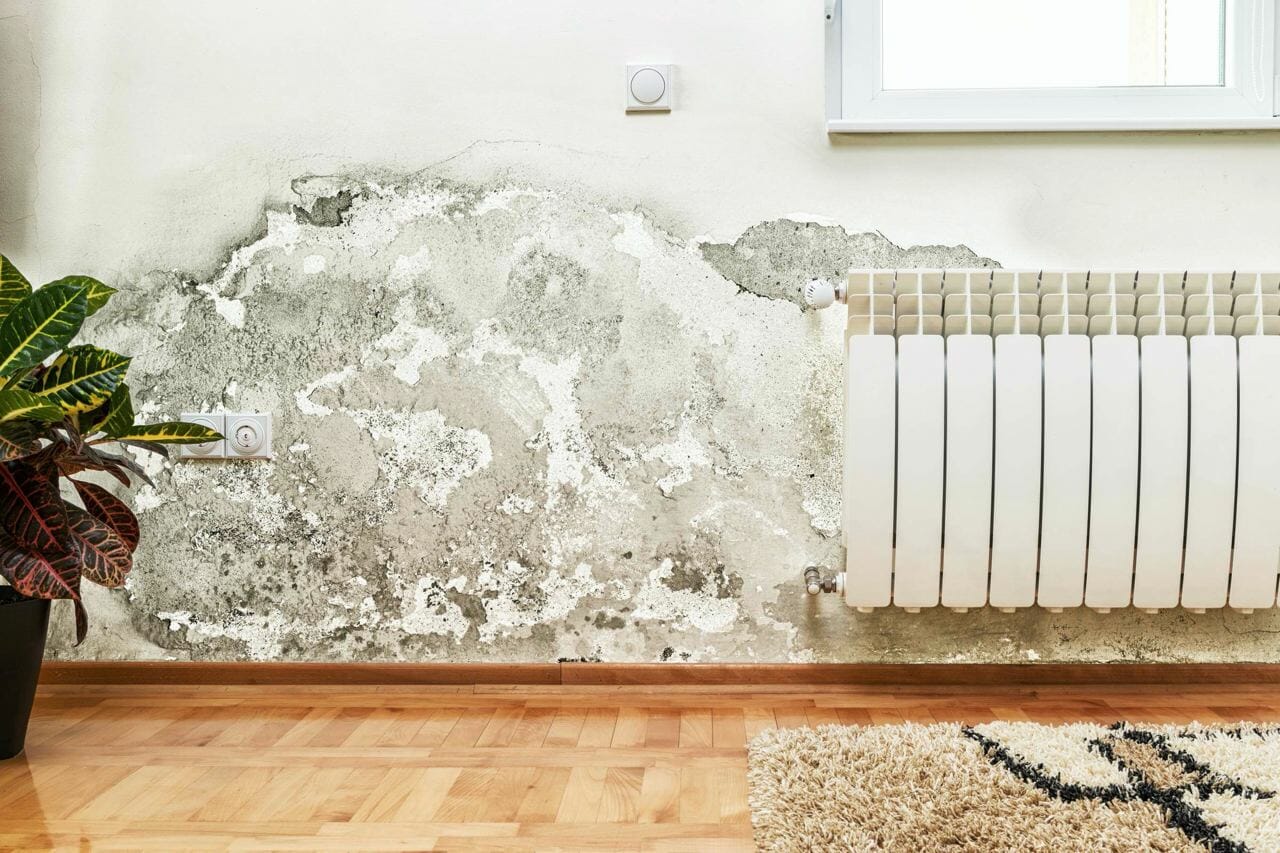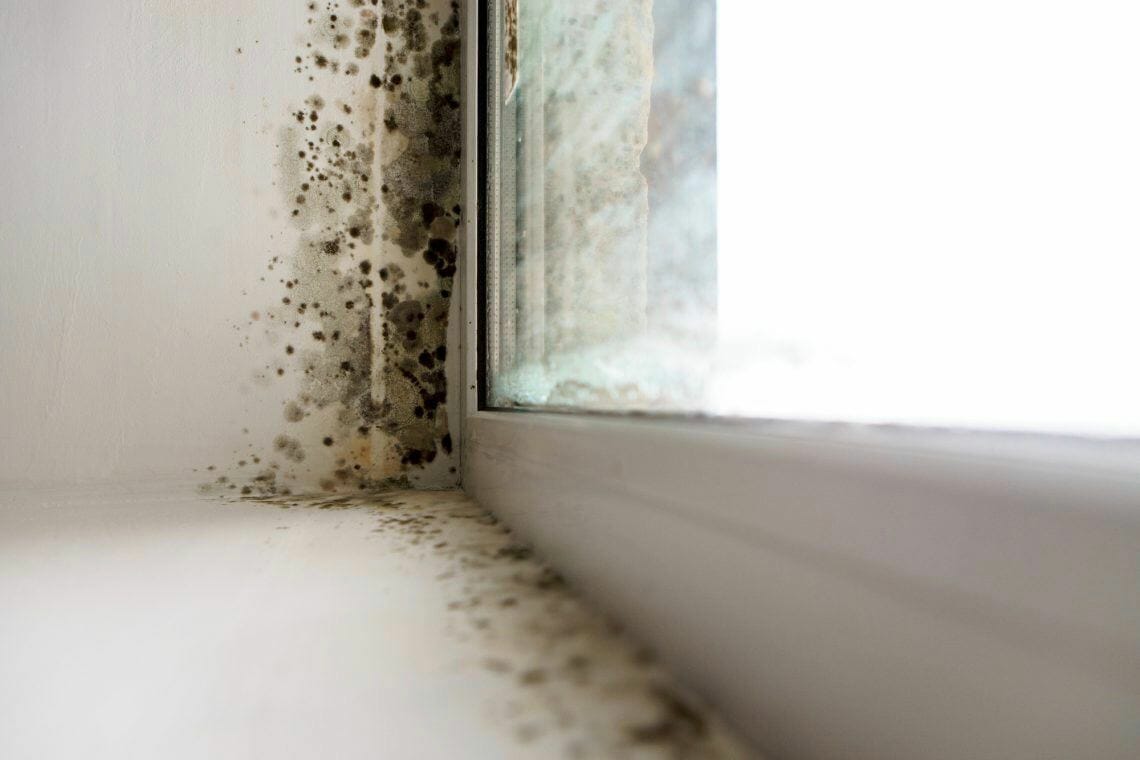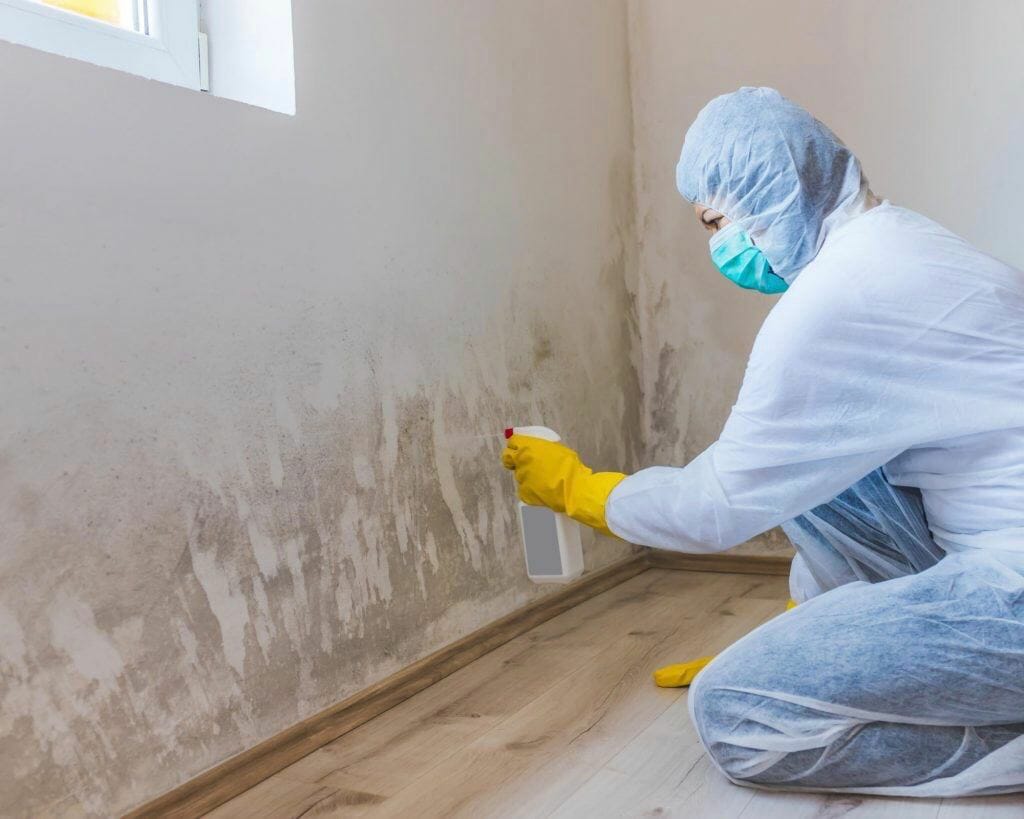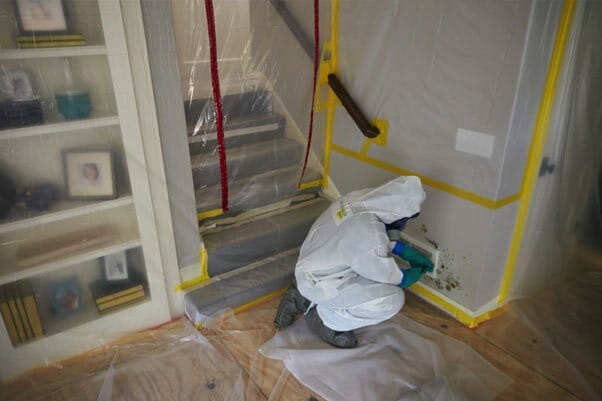Mold represents a variety of fungi that flourish in diverse settings, even within the confines of your living space. While certain mold species play a constructive role outdoors by breaking down deceased organic substances, their presence inside your domicile introduces a distinct risk. Coming into contact with mold spores can be harmful, particularly for those suffering from allergies or asthma.
If mold is growing in your home, you are far more likely to be exposed to these spores. While it may be safe to sleep in a house with mold in the short term, long-term exposure to mold can endanger your health and well-being. If you notice mold growing in your home, you should make an effort to have it removed as soon as possible.
We have put together a guide to help you understand the impact that mold has on your health, the types of mold that might grow in your home, how to get rid of mold, and how to prevent it from growing in your home in the first place.
Is mold dangerous to my health?
For anyone worried about their exposure to mold, the good news is that you’re likely already exposed to mold every single day. A small amount of exposure to tiny amounts of mold, particularly in the outdoors, is entirely normal and should not be a cause for concern.
However, exposure to larger amounts of mold, especially in a confined space such as the home, can prove a threat to your health.

The biggest problem that mold presents to your health comes through its tiny, microscopic spores. These spores can cause a variety of symptoms depending on your sensitivity to mold. On the milder end of the spectrum, mold can cause some people to break out in a rash or give them a runny nose.
For people who are allergic to mold, it can cause much more severe symptoms. These symptoms are usually related to the upper respiratory tract and are caused by the inhalation of mold spores. As there is no reliable clinical test for a mold allergy, you may not even know you are allergic to mold until you have been exposed to it.
In addition to this, mold also presents an issue for asthma sufferers. As well as exacerbating their usual symptoms, inhalation of mold spores can even bring on an asthma attack.
What types of mold can grow in my house?
There are many types of mold that can grow in your home, some of which are more dangerous than others. While it is commonly thought that the color of a mold is its main identifying feature, that is not always the case.
A few of the common household molds, including the ones you need to watch out for, include:
- Fuligo septica, which often presents as slimy orange mold, is one type of mold that might not be particularly injurious to your health, but can pose a danger to your home itself. This mold thrives on wooden surfaces, and can damage anything from your window sills to your kitchen bench if it is allowed to grow unchecked.
- Aspergillus, which can be black, green, or even yellow, is a common mold that you are most likely exposed to every day. Exposure in large amounts, however, can trigger respiratory problems in susceptible persons.
- Penicillium, which is more famous for its ability to produce penicillin, can be white or blue, and is often found on food or in humid places. Despite its important role in one of the world’s best known antibiotics, penicillium can also cause a severe allergic reaction.
- Stachybotrys chartarum is perhaps the most dangerous mold on this list. Also known as toxic black mold, it is greenish-black in appearance, and grows in areas with large amounts of moisture. It is so dangerous because it produces mycotoxin which can result in a range of symptoms including headaches, respiratory issues, rashes, and sometimes even blood poisoning. It can also be fatal.

What can happen if I stay in a house with black mold?
Your reaction to toxic black mold – Stachybotrys chartarum – will depend upon your individual tolerance level.
For anyone with asthma or a mold allergy, you run the risk of severely triggering your symptoms by remaining in a house with black mold. Even if you are not allergic to black mold, you may still experience allergy-like symptoms such as difficulty breathing, a runny nose, and skin irritations such as a rash.
Black mold also presents a risk to those who might have weakened or compromised immune systems, such as those with HIV, the elderly, and the young.
Regardless of your tolerance level or risk profile, there is still a chance that you can become ill from prolonged exposure to toxic black mold.

Is sleeping in a room with mold bad?
While it is never ideal to have mold in any room in your home, it may be particularly dangerous to sleep in a bedroom that has mold in it, especially for children.
Researchers from the Wellington Asthma Research Group in New Zealand found that a moldy bedroom increased the likelihood of a child being diagnosed with or suffering from asthma.
Given the prolonged amount of time we spend in our bedrooms (often upwards of eight hours per night) a bedroom that is covered in mold logically increases our risk of exposure to mold spores. This in turn increases our chance of falling victim to some of the common symptoms of mold exposure such as respiratory issues and skin irritation.
How can I remove mold from my home?
Depending on the size and location of your mold problem, you may have a few options when it comes to removing mold from your home.
If the patch of mold in question measures less than 3ft by 3ft, you may be able to clean it yourself.
The first and most obvious course of action is to remedy any dampness or moisture that may have caused the mold to grow in the first place. Once dry, and if the mold is growing on a hard surface, you can then scrub it with water and detergent to remove it.
If the mold patch is larger, or if you would simply like a professional to take care of the job, mold remediation is another option.
Mold remediation involves a professional properly assessing the area of concern and determining the best and most appropriate methods for cleaning and removing the mold. This may involve a wet vacuum, which will thoroughly dry the area, a damp wipe down, or use of a HEPA vacuum to remove any remaining fine particles.
If the mold in your home is “hidden” (beneath carpets, on the back of wallpaper, or the underside of ceiling tiles), additional remediation may be required.
When it comes to mold, prevention is the best cure. Keeping your home dry and well-ventilated is your best bet for keeping mold at bay.

Is it safe to live in a house during mold remediation?
While it may be possible to live in your home during the mold remediation process, it is not usually advised.
Given that mold tends to grow in the damper areas of your home, it is likely that most of the remediation work will be taking place in your kitchen or bathroom. During this time you will be unable to access the rooms or areas of the house under remediation, which may prove a hindrance to your usual day-to-day routine.
It is also likely to be extremely noisy in your home during the remediation works. With several vacuums operating at once, as well as other equipment such as dehumidifiers, your home will probably not be the tranquil haven you are accustomed to!
There is also a possibility that the remediation works may temporarily agitate mold spores, increasing their concentration before they are removed. If you are particularly sensitive to mold, then it is certainly not advisable for you to stay in your home while remediation is underway.
If your remediation specialist advises you that the remediation process will take several days – or even weeks – you may wish to relocate until the works are completed.

Is it safe to live in a house after mold remediation?
A thorough mold remediation will remove any trace of the mold and its spores. Once your remediation specialist has advised that the remediation is complete, you are safe to move back into your home.
It is possible that certain areas or items in your home will not have been able to be remediated. This is likely to be the case with more porous materials, such as carpet, wallpaper, ceiling tiles, and gypsum board. Toxic black mold is especially prevalent in these materials.
If that is the case, these items will be removed and destroyed as part of the remediation process.
So, while your home may not be exactly the same as you left it, it will certainly be much cleaner and completely mold free!







